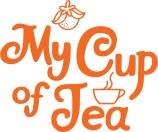
Calling All True Believers
In 1977, a Stanford University psychologist studying group dynamics, Albert Bandura, found that groups whose members were confident in the group’s abilities or likelihood of success were in fact more successful.
Duh.
This sounds a lot like what we have all been told by parents, teachers, coaches, and influential adults. “Have some self-confidence and you’ll do great,” or something to that effect. But there is more to it.
Bandura named this observation “collective efficacy.” Collective Efficacy Theory has since been applied across numerous disciplines including education, corporations, and criminal justice.
In a landmark study in 1997 led by Robert Sampson, a Harvard professor and past president of the American Society of Criminology, Sampson studied the impact of collective efficacy on reducing crime. What he found is that neighborhoods with a high crime rate and a low level of cooperation with law enforcement had little to no collective efficacy. Said a different way, neighbors did not believe that working together they could make a difference in their communities. But why?
For collective efficacy to form there must be social cohesion. Social cohesion involves having shared values and norms, social and institutional trust, a sense of belonging, cooperation, and equality and inclusion. When these pillars exist in a group, a business, or a neighborhood, they produce confidence among the group members that together the group can be impactful.
This is what we believe we have accomplished at My Cup of Tea, though the work must be ongoing and nurtured. Perhaps more importantly, collective efficacy is what we desire for Orange Mound, and the community is ripe to achieve it.
Factors that promote social cohesion
There are some basic elements of social cohesion that Orange Mound currently possesses or had in the past that it is capable of realizing in the future. They are:
· High level of home ownership – Orange Mound has a previous history of home ownership that has waned. Today, home ownership is less than 50%, but still higher than many zip codes in Memphis and there is a legacy to build on. Others believe this too, as evidenced by the new home construction happening.
· A core of stable, long-term residents – Mary Mitchell, the matriarch of Orange Mound and keeper of its history comes to mind. Among the My Cup of Tea ladies, Cheryl was raised here, left, and moved back. Bretta wasn’t raised in Orange Mound but has lived here for decades. It is true that many exited when crime rose, but there are still deep roots.
· The presence of extended families – Some have extended families still in the neighborhood, but more high-quality housing options can help nurture that dynamic.
· Close friendships among neighbors – This is difficult in every community in this age of communicating digitally and avoiding direct contact with other humans. However, our Neighborhood Watch, plans for a farmers’ market, and the intentionality of nonprofits JUICE Orange Mound and Red Zone Ministries to build relationships block by block are critical pieces of the puzzle. Also, the rich history surrounding Melrose High School and the connection people feel to it is another leveraging point.
· Good schools – The schools within the Orange Mound zip codes are graded D or F on the state’s report card. Primarily this means that the vast majority of students are not reading or doing math on their grade level. But, Arise to Read, volunteers from My Cup of Tea, and others for Second Presbyterian Church are tutoring at Hanley Elementary.
· People who attend local centers of worship – There are churches in Orange Mound that have been long-time anchors like Beulah Baptist Church, Mt. Moriah Baptist, and Mt. Pisgah CME. It has been our experience that many of the parishioners of these churches live outside of the neighborhood and those churchgoers in the community attend church outside of the 38111 or 38114 zip codes. There is much more work to do.
· The use of amenities such as parks, recreation centers, and libraries – The Orange Mound Community Center has long been a gathering place for residents, Red Zone Ministries is providing a gathering spot with various opportunities for youth 9-18. There was a time when Orange Mound had one of the best parks in the city complete with an impressive swimming pool.
There are both historic and tangible building blocks in Orange Mound to attain social cohesion again, but it will take time and effort. The good news is that community efficacy at some level is not dependent on achieving the maximum level possible of social cohesion. What does that mean?
The small group that gathers on our porch to plan and implement our Neighborhood Watch can help lower crime on our block. That’s a start. To substantially lower the crime rate across the entire neighborhood requires more “true believers” who will join the movement as homeownership increases, schools get a little better, and they make friends with a few neighbors.
It means a small group of “true believers,” like our family at My Cup of Tea, who have confidence in our abilities, trust in one another, and by the grace of God can make a difference.



















